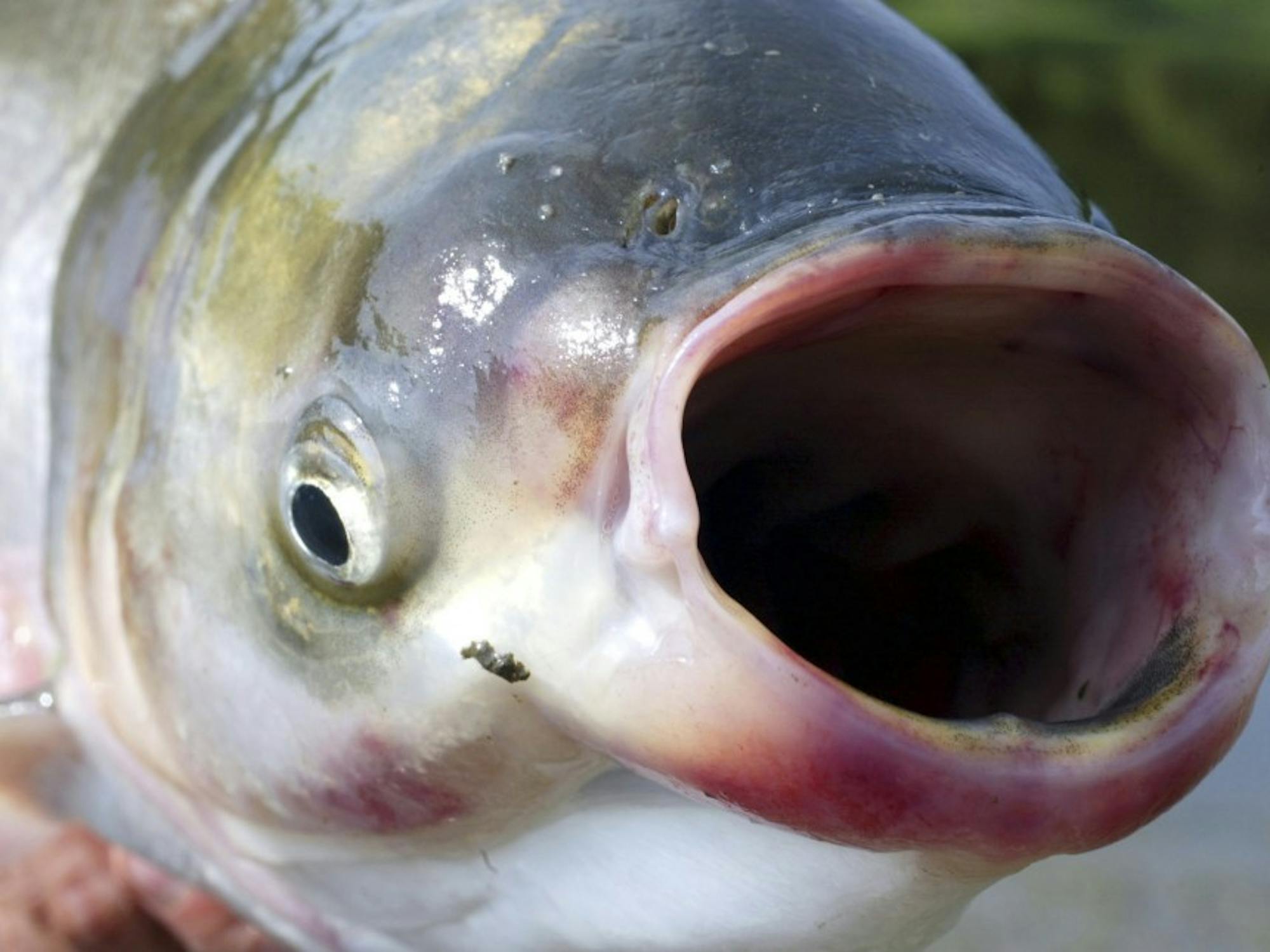DETROIT — A group of federal agencies criticized in the past for failing to move quickly to stop Asian carp from entering the Great Lakes announced Friday that they’re taking every precaution to keep them out, even poisoning thousands of fish next month to prevent any leaping, dangerous bighead or silver carp from escaping the Chicago Sanitary and Ship Canal.
The carp are voracious feeders and breeders and eat all the plankton that other fish rely on.
Starting Dec. 2, the canal will be shut down for up to two weeks to put a potent fish toxin, rotenone, into five and a half miles of water downstream from a set of electrical barriers built to repel the Asian carp where the canal links to Lake Michigan at five possible points.
The move is planned because the newest and most powerful of the two electric barriers needs to be taken down for maintenance. The older barrier is less powerful and not capable of repelling small, young Asian carp, said Col. Vincent Quarles of the Army Corps of Engineers’ Chicago district.
That means that while the newer barrier is down, juvenile fish could leap the barrier and swim toward Lake Michigan. Poisoning all the fish below the barriers will ensure they can’t get by, officials said Friday.
The poisoning plan was developed with the help of fish biologists, said John Rogner, assistant director of the Illinois Department of Natural Resources. Made from the roots of tropical plants, rotenone is a natural compound that Rogner said is not harmful to humans, pets or other wildlife.
Rotenone has been used in 60 Illinois lakes for decades to get rid of nuisance fish and for fish sampling, Rogner said. Because the weather has been cool, the dead fish shouldn’t pose an odor problem, even though 200,000 pounds worth of dead fish are expected to rise to the surface.
The operation is expected to cost between $1 million to $2 million. The barrier that needs maintenance cost $9 million and went online in April. Its voltage was turned up in August after evidence that carp were closer than previously thought.
Though Michigan supports the latest efforts, “they fall short of the long-term solution needed,” Michigan Lt. Gov. John Cherry said. “We know the damage Asian carp would cause if they reached the Great Lakes, and we must take every available action to prevent that from happening.”
That includes finishing a third barrier, which Quarles said is supposed to be finished by late next year.
Cherry also called for turning up the voltage even further on the newest barrier, and for doing something permanent to prevent flooding on the Des Plaines River, where Asian carp have been found, which could wash the carp into the canal past the barrier.
The entire operation, which will require several hundred people and dozens of boats, means the canal must close to barge traffic for the second time in three months.
“We’re not happy about it,” said Lynn Muench, spokeswoman for the American Waterways Association, representing barge companies and towboats that tow barges through the canal.
“It’s troubling,” she said Friday. “Nobody is considering the impact on the economy and jobs.”










